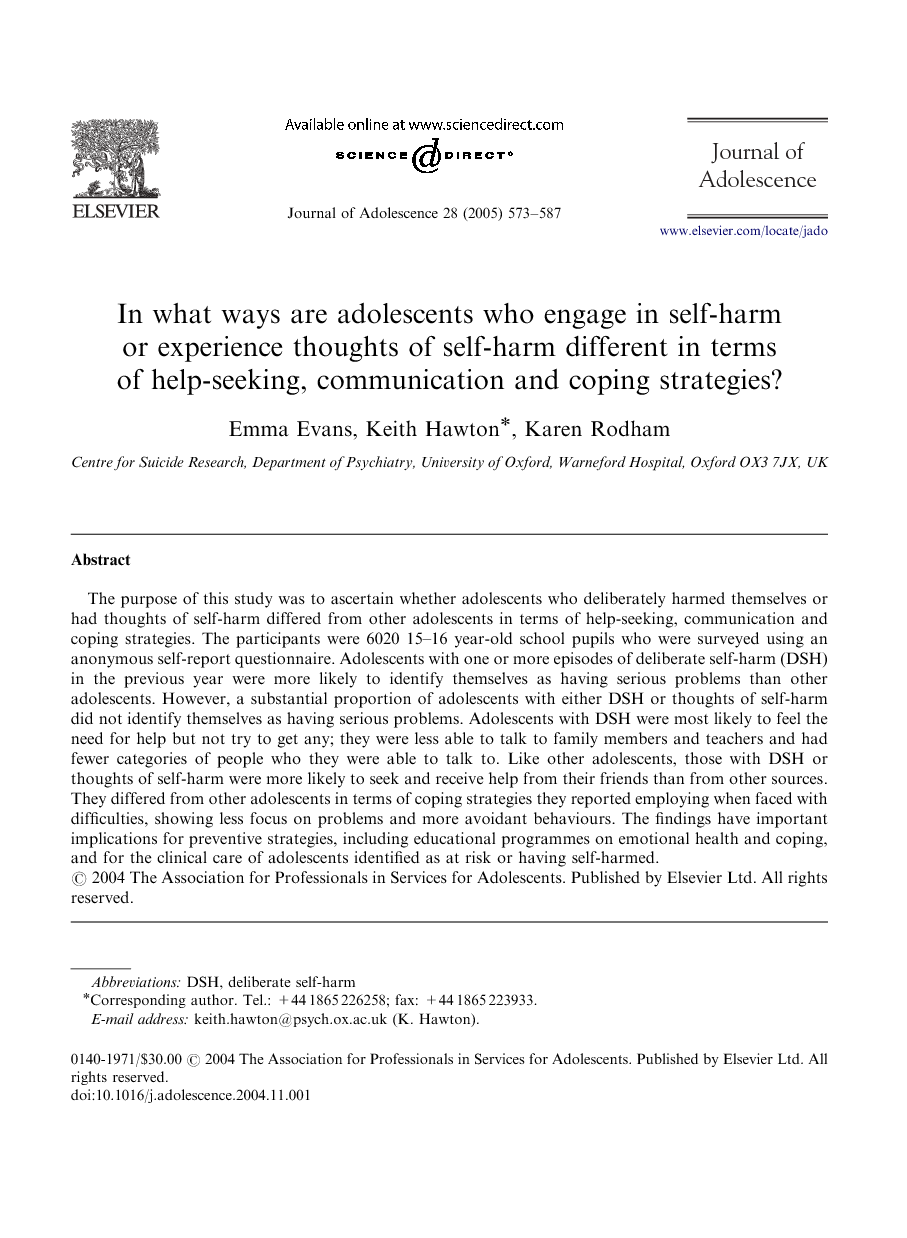ترجمه فارسی عنوان مقاله
انگیختگی ادراکی ایجاد حافظه های جدید اپیزودیک را بهبود می بخشد
عنوان انگلیسی
In what ways are adolescents who engage in self-harm or experience thoughts of self-harm different in terms of help-seeking, communication and coping strategies?
| کد مقاله | سال انتشار | تعداد صفحات مقاله انگلیسی |
|---|---|---|
| 35467 | 2005 | 15 صفحه PDF |
منبع

Publisher : Elsevier - Science Direct (الزویر - ساینس دایرکت)
Journal : Journal of Adolescence, Volume 28, Issue 4, August 2005, Pages 573–587

